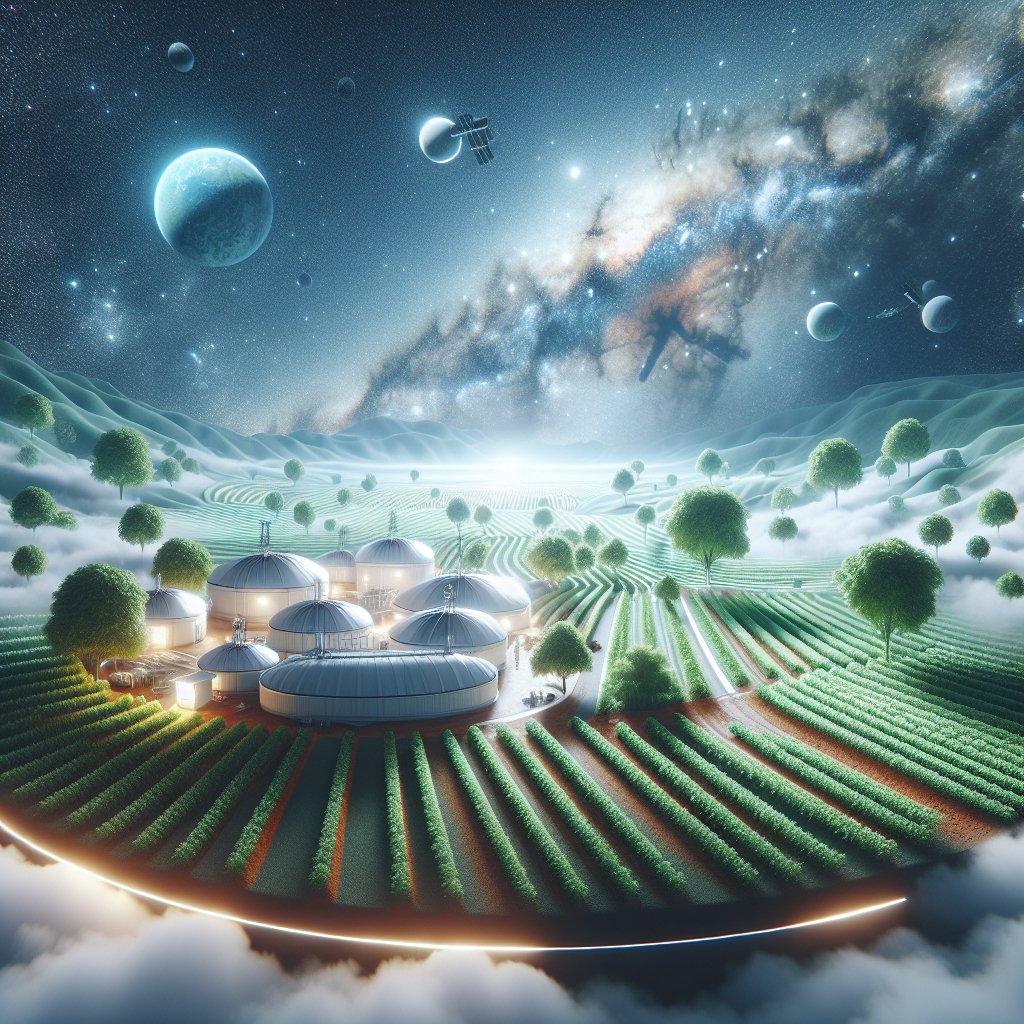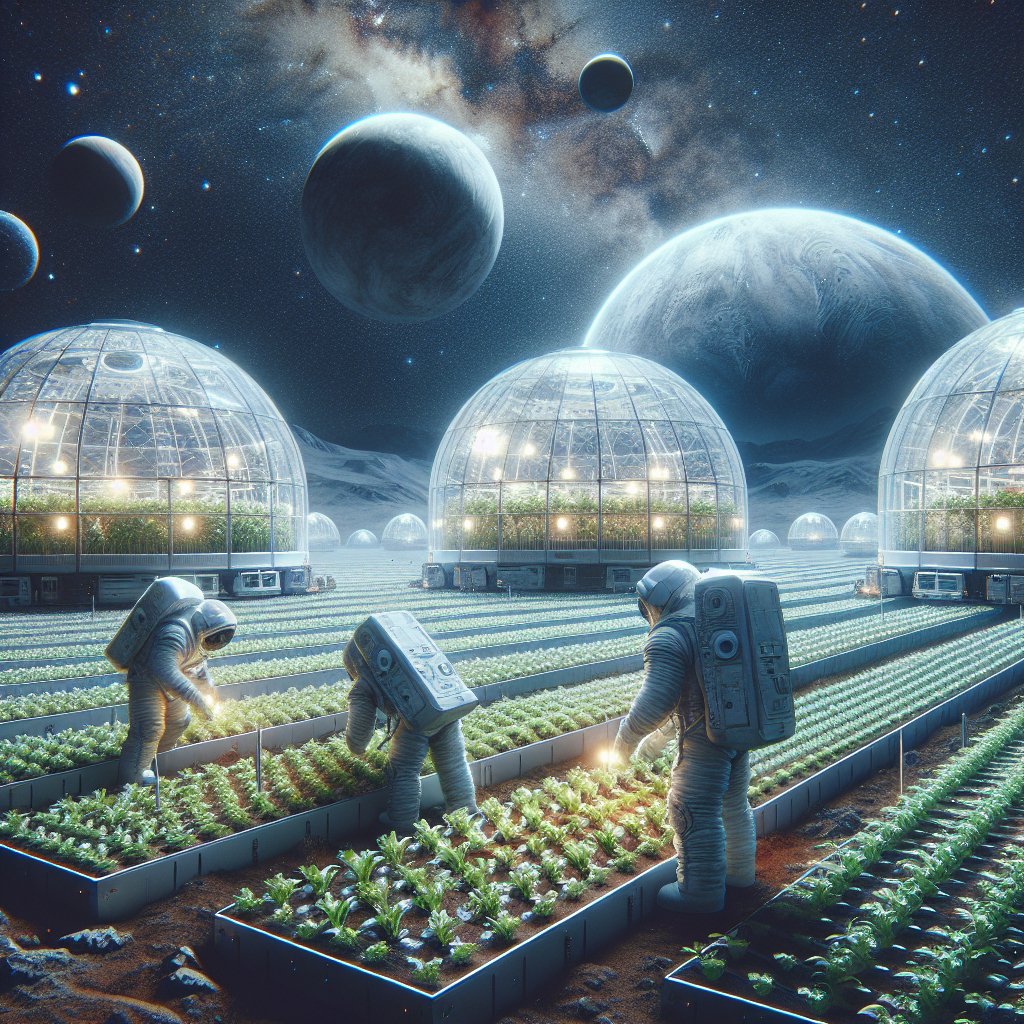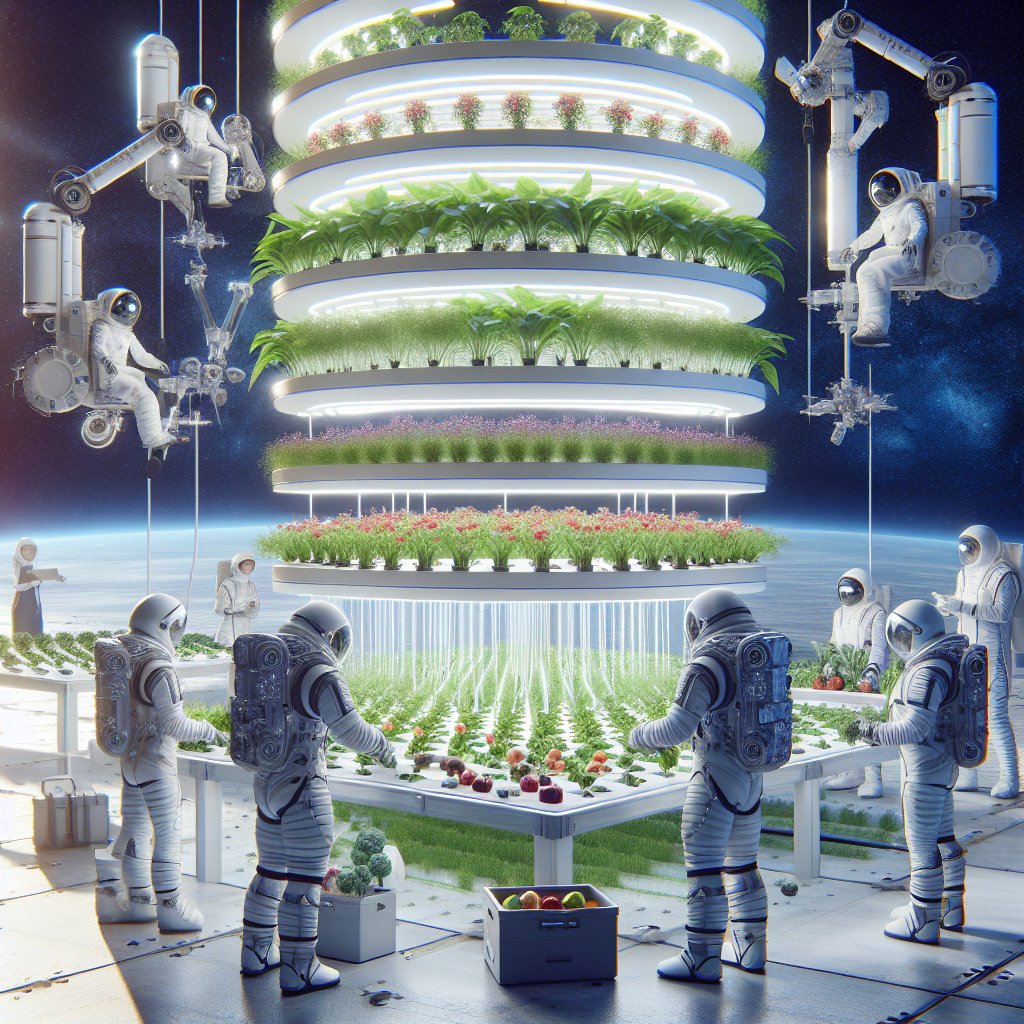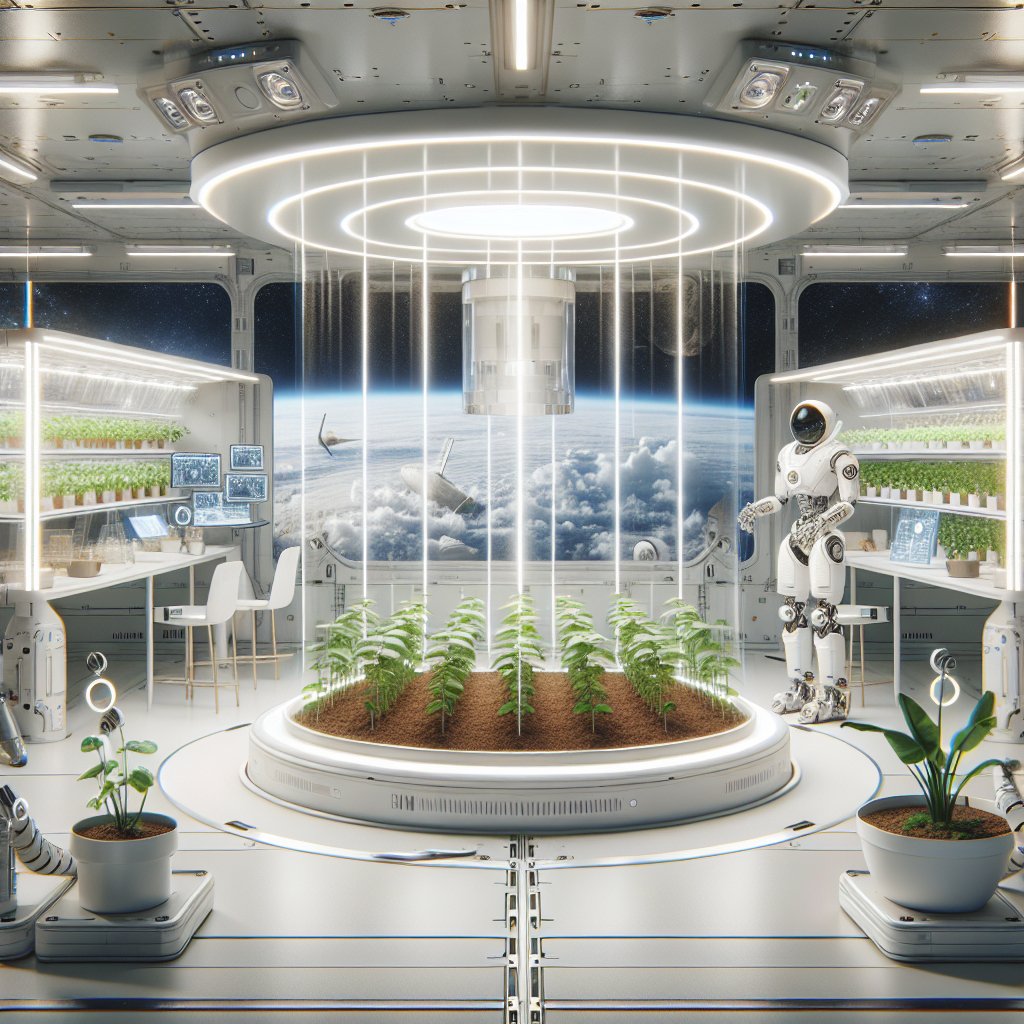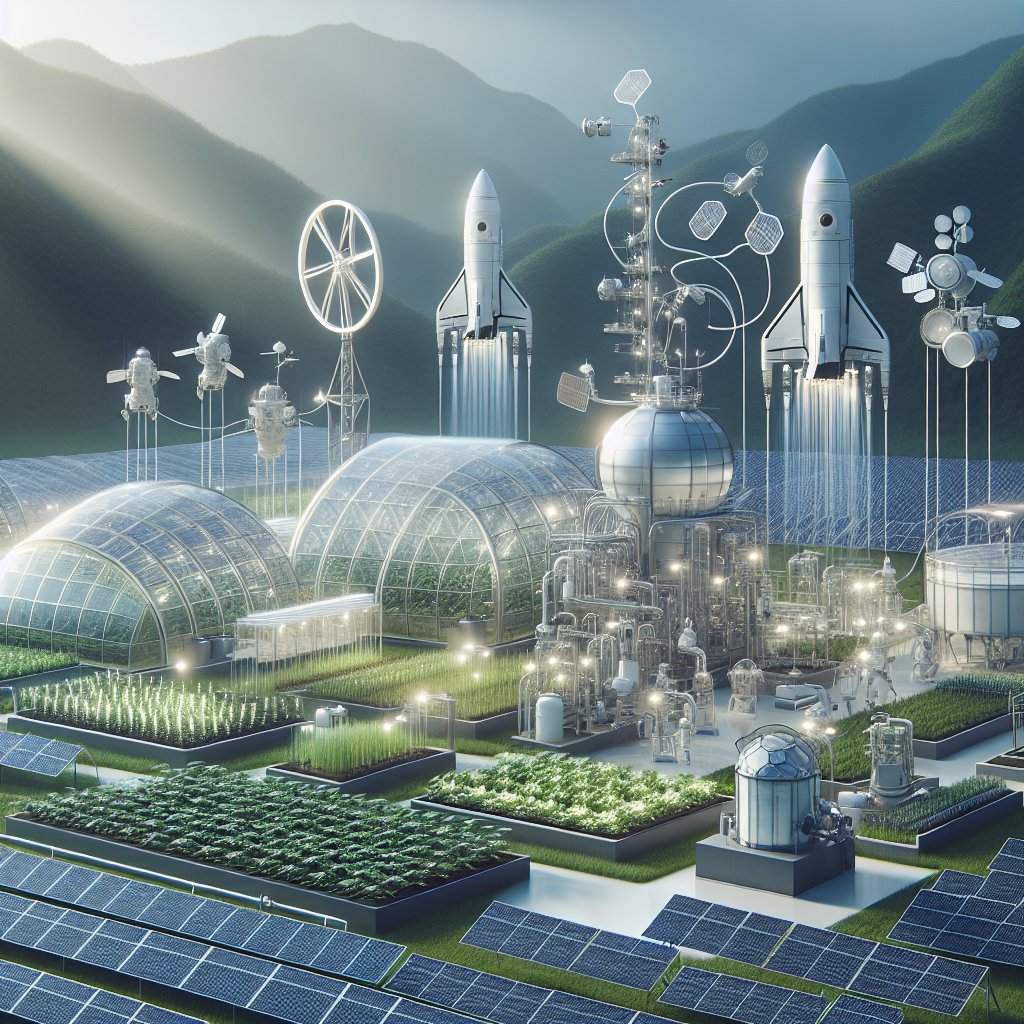Farming in space is no longer just a concept confined to the realms of science fiction; it is rapidly becoming a reality as humanity prepares for long-term space exploration and potential colonization of other planets. The challenges of growing food in microgravity environments have sparked innovative research and development, paving the way for sustainable agricultural practices beyond Earth. This article explores the evolution of space farming, the technologies involved, and the implications for future space missions and life on other planets.
The Evolution of Space Farming
The idea of farming in space dates back to the early days of space exploration. As astronauts embarked on missions to the Moon and later to the International Space Station (ISS), the need for sustainable food sources became apparent. Early missions relied heavily on pre-packaged meals, but as missions extended in duration, the limitations of this approach became clear. The concept of growing food in space emerged as a viable solution to ensure the health and well-being of astronauts during long-term missions.
Initial Experiments
The first significant steps towards space farming were taken aboard the ISS, where various experiments were conducted to understand how plants grow in microgravity. In 2014, NASA’s Veggie experiment marked a milestone in space agriculture by successfully growing red romaine lettuce in a controlled environment. This experiment not only provided fresh food for astronauts but also offered valuable insights into plant growth under unique conditions.
Following the success of Veggie, subsequent experiments expanded the range of crops grown in space. The Advanced Plant Habitat, another NASA initiative, utilized a larger growth chamber equipped with advanced sensors to monitor plant health and growth conditions. These experiments demonstrated that plants could adapt to microgravity and provided critical data for future agricultural endeavors in space.
Technological Innovations
As research progressed, various technologies were developed to support space farming. Hydroponics and aeroponics emerged as popular methods for growing plants without soil, utilizing nutrient-rich water solutions or mist to nourish the crops. These methods are particularly advantageous in space, where water conservation is crucial, and soil transport is impractical.
Additionally, advancements in LED lighting technology have played a significant role in optimizing plant growth in space. By providing specific wavelengths of light, researchers can enhance photosynthesis and accelerate growth rates, making it possible to produce food more efficiently in confined environments.
The Future of Space Agriculture
As humanity looks towards Mars and beyond, the importance of sustainable agriculture in space becomes increasingly evident. The challenges of growing food on other planets are multifaceted, involving not only the physical environment but also the psychological well-being of astronauts. Fresh food can significantly improve morale and provide essential nutrients that are often lacking in processed space food.
Potential for Mars Colonization
One of the most ambitious goals of space exploration is the colonization of Mars. The Martian environment presents unique challenges for agriculture, including lower gravity, extreme temperatures, and high radiation levels. However, researchers are optimistic about the potential for growing food on the Red Planet.
Studies have shown that certain crops, such as potatoes and wheat, could thrive in Martian soil, provided that the right conditions are created. Scientists are exploring the possibility of using Martian regolith, the loose soil found on the planet’s surface, as a growing medium. By enriching this soil with nutrients and creating controlled environments, it may be possible to cultivate crops that can sustain future Martian settlers.
Closed-Loop Systems
To support long-term missions and potential colonization, the development of closed-loop agricultural systems is essential. These systems would recycle waste products, such as carbon dioxide and organic matter, to create a self-sustaining environment for plant growth. By integrating aquaponics, where fish and plants are grown together, researchers can create a balanced ecosystem that maximizes resource efficiency.
Such systems not only provide food but also contribute to life support by producing oxygen and purifying water. The successful implementation of closed-loop systems could revolutionize space agriculture and make long-duration missions feasible.
Challenges and Considerations
Despite the promising advancements in space farming, several challenges remain. The psychological impact of long-term isolation and confinement on astronauts cannot be overlooked. Growing food in space offers a sense of normalcy and connection to Earth, but it also requires careful consideration of the mental health of crew members.
Research and Development Needs
Continued research and development are crucial to address the challenges of space agriculture. Scientists must explore the effects of microgravity on plant genetics, growth patterns, and nutrient content. Understanding how different crops respond to the unique conditions of space will be vital for optimizing food production.
Moreover, collaboration between space agencies, universities, and private companies will be essential to accelerate advancements in space farming technologies. By pooling resources and expertise, the global community can work towards creating sustainable agricultural practices that will support future space missions.
Ethical Considerations
The prospect of farming in space also raises ethical questions. As humanity expands its reach into the cosmos, considerations regarding the preservation of extraterrestrial environments become paramount. The introduction of Earth-based organisms to other planets could have unforeseen consequences on local ecosystems, and careful planning is necessary to mitigate potential risks.
Conclusion
Farming in space is a rapidly evolving field that holds the key to humanity’s future in the cosmos. From the initial experiments aboard the ISS to the ambitious plans for Mars colonization, the journey towards sustainable agriculture beyond Earth is well underway. As researchers continue to innovate and overcome challenges, the dream of growing food in space is becoming a tangible reality. The implications of successful space farming extend beyond mere sustenance; they represent a crucial step towards establishing a human presence on other planets and ensuring the survival of our species in the vast expanse of the universe.
